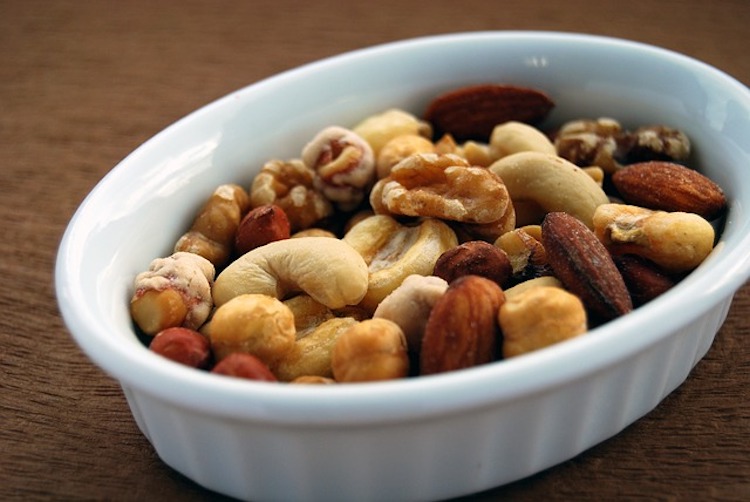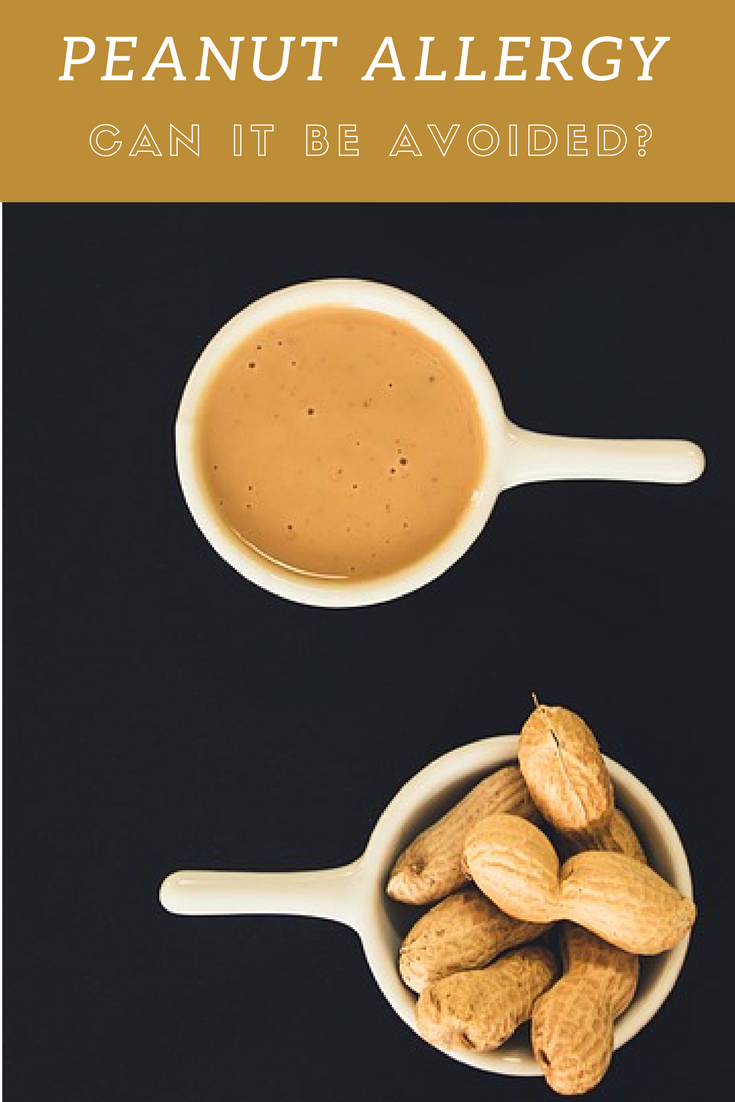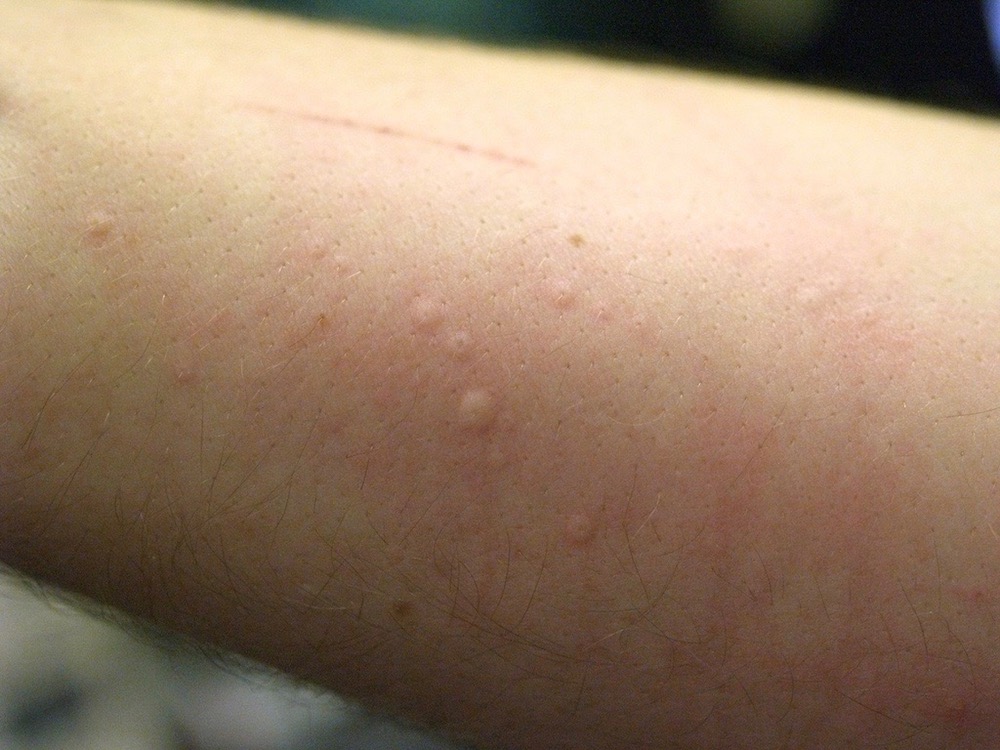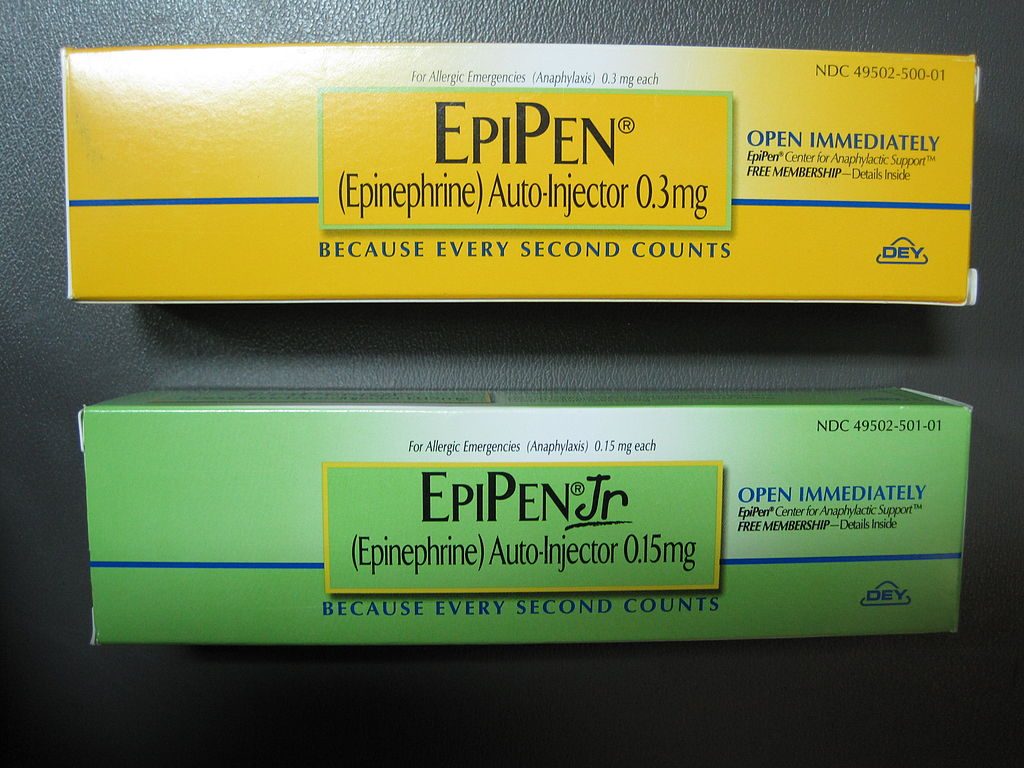
Peanut allergies, long thought mythical by uninformed folks who do not have the “luxury” of experiencing them in their own families, are all too real, and the results can be devastating.
Time reports that of the roughly 3.3 million Americans who have nut allergies, there are around 150 deaths each year from related illnesses.
While that is a relatively small amount percentage-wise, it does not express the horror of watching your child rapidly flare up from passing contact.
It does not show the terror of his airways closing and being unable to draw a breath. It does not demonstrate the fear that a simple birthday party could turn into a life-threatening situation.
A Mother’s Terror
The horror of dealing with peanut allergies is best described in the words of an actual mother who has to deal with it every day. Blogger Kelly McIntire hits the nail on the head, stating that “Raising a child with a life-threatening peanut allergy means that disaster’s never far from your thoughts.”
McIntire continued: “Every time he heads off to school, I have to face the possibility that as he’s walking to the bus stop, an eighteen-wheeler will come out of nowhere, slam into my boy, and send him pinwheeling end over end until he lands in a bubbling tank of Skippy.
When I drop him off at a birthday party, I confront the fact that this could be the last time I see him before a careening ice-cream van sideswipes him like a pinball flipper through the window of some kind of Thai food factory and into an industrial trough of peanut sauce.”
In the following guide, we’ll look at why peanut allergies are so feared among parents like McIntire. That means we’ll be going over the causes, signs, and repercussions, as well as some treatments if you aren’t sure what your next moves should be.
(Hint: always start by talking to your doctor.) Now let’s get started. But first…

Is It Food Tolerance or Food Allergy?
Before digging deeper into the reality of peanut allergies, it is important to dispel misconceptions about what peanut allergies — or any food allergies — actually are.
As we are about to discuss in more depth, food allergies are assaults on the immune system. Food intolerances are when you have issues digesting certain foods.
“Lactose intolerance,” which is an intolerance of milk and other dairy products, is one of the most common forms; and it used to be deadly.
That is because infants with lactose intolerance had no way of getting the nourishment they needed to grow and develop. Thankfully, we have developed alternative foods that can be more easily tolerated while dispensing the proper nutrients, and it has been a very long time since a food intolerance has proven fatal.
Other common food intolerances to be mindful of include wheat; gluten; caffeine; histamine (see pickles, cured food, mushrooms); and food additives (see Splenda, Sweet-N-Low, food coloring).
The Cause of Peanut Allergies
The cause of peanut allergies is simple to explain — your immune system acting up — though we are not quite sure why it happens this way. To shed some light, you would have to solve every mystery of this particular portion of human biology.
What happens to cause peanut allergies to flare up, is this: your body’s immune system (aka what fights off disease and infection) mistakenly identifies proteins in the peanuts as outside invaders.
The immune system then overreacts, essentially creating a self-fulfilling prophecy.
Peanut allergies can be slight to severe and even deadly, so knowing how you come into contact with them is vital. As the Mayo Clinic points out, there are three main ways.
Direct Contact
In other words, you eat peanut butter, brush up against peanuts at one of those fancy steakhouses, or consume some kind of dessert that has peanut in it unbeknownst to you.
Direct contact is the quickest way to tell if you have peanut allergies. It also can be the most severe.
Cross-Contact
Just because direct contact is the fastest-acting way to have an allergy attack, that does not mean it is your only worry.
Individuals with sensitive peanut allergies can feel the same effects through trace amounts that have rubbed off on objects or foods that ordinarily would not contain peanuts.
If anything, this is scarier than direct contact because if you are a person with peanut allergies, you do not know what to avoid to stay out of trouble. Cross-contact leaves you far more vulnerable than if you knew where the peanuts were in the first place.
Inhalation
And just when you thought it could not get any more terrifying than cross-contact, along comes the inhalation factor to blow that assumption out of the water.
This method usually terrorizes ultra-sensitive types who walk into a room where peanut dust or residue hangs in the air. It isn’t visible, but it is hanging there waiting for someone sensitive to take a simple breath.
After that, you better be reaching for the EpiPen. (More about what that is in a moment if you don’t already know.)
Why Have Cases of Peanut Allergies Increased?
Twenty or 30 years ago, no one spoke much about peanut allergies, but today, it is a common fear.
Parents hosting birthday parties may ask fearfully if a child with peanut allergies needs any special treats to keep from feeling left out. Parents of children with the allergy may be too scared to let their child go for fear of what they might encounter.
It certainly is on the mind of parents on both sides of the coin, and the children themselves are made to feel different while learning at a very young age that their world is a pretty scary place.
But How Did It Get This Way?
“We have done such a good job of eliminating the threats that the immune system is supposed to manage, that it’s looking for something to do,” said Anne Muñoz-Furlong, CEO of the nonprofit Food Allergy and Anaphylaxis Network, in a Popular Science article from 2008.
At that time, the number of food allergies in children had doubled from what they were in 1998. Muñoz-Furlong is of the belief that parents’ decisions to feed their children “more handy snacks,” many of which contain peanuts or derivatives of peanuts, are a possible factor.
“We’re bombarding the immune system with these [food-based] allergens, so it’s attacking those instead,” she said.
The article also propagates the theory that children being less active than they used to be — hello, video games — has tricked the immune system into identifying as threats things that it would have, in years past, built a tolerance for.
In a moment, we’ll get into a list of the various treatments and steps that you can take to avoid or reduce the effect of peanut allergies, but we’ll preview that by pointing out what the Popular Science article seems to be telling us: exercise more, eat less processed foods.
That’s hardly foolproof and hardly exhaustive, though.
Getting Out Ahead of Peanut Allergies
In 2017, the National Institute for Allergy and Infectious Disease (NIAID) developed new guidelines for defining different peanut allergy risk factors, and it has proven indispensible in getting out ahead of the condition.
The guidelines note that an infant at high risk of developing peanut allergy will experience severe eczema and/or food allergy to eggs. They recommend introducing foods that feature peanuts in the 4-6-month-old range for high-risk infants already on solid foods, after a medical professional has determined it’s safe.
Children at high risk, per the guidelines, should be observed and tested by an allergy specialist. It is important to note that a child who tests positive to peanut sensitivity will not necessarily have a peanut allergy, so don’t jump to conclusions until the allergist has made a determination.
To further ensure safety, tests are conducted at an allergist’s office so if there are any adverse effects, they can be dealt with immediately.

Pictured: an outbreak of hives as brought on by a reaction to peanut allergies.
Peanut Allergy Signs and Symptoms
When you hear about peanut allergies, you typically hear about them in the worst possible terms, and there is good reason for that. They’re unpleasant at best and terrifying at worst, and no one knows for sure why they occur.
That said, there are mild cases. In the next section, we will be looking at both.
How Peanut Allergies Look
In mild cases, peanut allergies can show up as stomach aches, runny noses, hives, tingling of the tongue or lips, and an itchy rash. While some of those symptoms may make you wish for death — especially when you are experiencing a particularly vicious full-body rash — they will not actually cause it.
No, that “honor” goes to a condition called anaphylaxis. The American College of Allergy, Asthma & Immunology (ACAAI) characterizes the conditions of anaphylaxis like this:
“This severe reaction happens when an over-release of chemicals puts the person into shock. Allergies to food, insect stings, medications and latex are most frequently associated with anaphylaxis.”
The most common symptom of anaphylaxis is when the allergy sufferer has trouble breathing, brought about by a tightening of the throat. There also can be hives, swelling, nausea, and vomiting.
When anaphylaxis sets in, it will affect the person’s ability to speak, and they may experience a hoarse voice. Additionally, there may be abdominal pain, diarrhea, dizziness, fainting, and abnormally low blood pressure, rapid heartbeat, or full-on cardiac arrest.
If concerned, get to a doctor immediately.
How Fast Peanut Allergies Can Show Up
According to FoodAllergy.org, a website that tracks allergies related to peanuts and other tree nuts, symptoms of allergic reaction to the legume can show up within “a few minutes” (less than ten) or take as long as two hours after exposure.
“In some cases, after the first symptoms go away, a second wave of symptoms comes back one to four hours later (or sometimes even longer). This second wave is called a biphasic reaction,” the site notes.
Biphasic Anaphylaxis
As Healthline describes it, biphasic anaphylaxis can occur from one to 72 hours after the initial attack, but it usually occurs 8-10 hours afterward.
Everything can seem aces, but that could soon turn into aces and eights. That’s why a doctor may keep a peanut allergy patient overnight once a problem is detected.
“The symptoms of biphasic anaphylaxis are the same as anaphylaxis,” the site adds, noting they may “differ in severity.”
The good news is that Anaphylaxis Phase Two is usually mild. No guarantees, though, so get immediate medical attention for it if you can.
The Repercussions of Peanut Allergies
Probably the most heartbreaking thread we came across when putting together this guide is the running database of peanut and food allergy deaths being kept by the No Nuts Moms Group.
To give you an idea of what parents of peanut allergy sufferers have to live with on a day-to-day basis, here are a few of the most disturbing cases.
In 2017 alone, 15-year-old Jacob MacDonald died after eating a cookie that he didn’t realize contained peanuts, and 24-year-old Georgina Hickman died after eating one peanut flavored crisp.
In 2016, 38-year-old Paul Wilson ate a dish that contained peanuts and died shortly thereafter. And in 2014, 7-year-old Joseph DeNicola died for simply enjoying a piece of Halloween candy.
You will notice these deaths claimed a variety of age groups, showing how peanut allergies are no respecters of persons. They can occur at any point in life and follow you for decades. Unfortunately, the full list is a much longer one.
The Financial Cost of Peanut Allergies
While it can be hard to give an accurate price tag to the true financial toll of peanut allergies, CBS News reported a study in 2013 that gave some pretty staggering figures. And as you know with the world of healthcare, nothing ever gets cheaper.
According to the report, food allergies cost the United States around $25 billion per year. The report lists peanut allergies as “one of the most common” food allergies responsible for that figure.
Researchers in Chicago looked at over 1,600 caregivers and found the amount of money that each spent on their affected children, which involved “doctor’s visits, trips to the emergency room and how much they spent on special foods and treatments” resulted in a cost of $4,180 per affected child annually.
The report continued: “Breaking down the $24.8 billion overall total, $4.3 billion went to direct medical costs from going to the doctor or ER, and $770 million went to family-related costs like time off work.
$5.5 billion was spent on other out-of-pocket expenses — 31 percent of which was spent on special foods alone, more than $750 per family per year — and $14.2 billion was racked up for lost opportunity, meaning a caregiver had to leave or change jobs due to the food allergy.”
According to Statista’s 2008-2022 inflation rate table, the average increase from 2013-2018 is 1.608 percent, so by the end of the year, if spending follows these same guidelines, American families will be laying out $26.39 billion.
However, that does not account for the unpredictably volatile increases on healthcare costs. The most recent increase was reported at just over 20 percent.

Pictured: the EpiPen is the most common treatment for severe reactions to peanut allergies, aka anaphylaxis.
Treating the Beast
Now that we’ve got the scary part of peanut allergies out of the way, let’s focus on the empowering part — what you can do to fight back and (possibly) save your life or the life of someone close to you.
Before we begin, let’s say that you should not take any of this as medical advice. And never, ever, ever do anything without first discussing possible treatments with your doctor.
Prevention of Allergic Reactions
As the saying goes, an ounce of prevention is worth a pound of cure. When dealing with your peanut allergies — or any food allergy for that matter — the only guaranteed way to avoid the negative effects is to not have food with peanuts or whatever-allergen in them.
As someone who is not personally suffering from a peanut allergy at the moment, that pretty much sucks because it a) limits choice and b) peanuts are friggin’ delicious, and they are used in the creation of some of the most delicious foods.
Thankfully, where many see limitation, companies have started to seize opportunity, creating a number of peanut-free stand-ins for the products that most people know and love.
6 Foods That You Can Eat If You Suffer from Peanut Allergies
- Chips: Popular brands include Cape Cod, Enjoy Life, Frito Lay, Herr’s Baked Potato Chips, Kettle, Pirates Brand, Popchips, Pringles, Utz, and Wise. A simple search of the brand name along with “peanut free” will help you find dozens of different flavors and options.
- Snacks and Cookies: Popular brands include Austin, Betty Crocker, Keebler, Kraft, Nabisco, Pepperidge Farms, P&G, and Sunshine. Word of warning, though, and this should apply to each bullet point: many of these companies make both peanut and peanut free products. Make sure you know what you are getting before digging in or serving them to someone with a peanut or tree nut allergy.
- Cereal: Popular brands include Cascading Farms, Enjoy Life, Freedom Foods, General Mills, Kashi, Kellogg, Post, Quaker Oats, and Uncle Sam.
- Ice Cream Bars: Popular brands include Blue Bunny, Breyers, Dole Fruit Bars, Edy’s, Flavorice, Good Humor, Icee, Luigi’s Real Italian Ice, Minute Maid, PhillySwirl, and Popsicle Brand.
- Nutritional/Energy Bars, Toaster Goods: Popular brands include Don’t Go Nuts Energy Bars, Enjoy Life, Kellogg’s, Made Good Granola Bars, Nature’s Path Organic Toasted Pastries, and Special K.
- Peanut Butter Alternatives: Popular brands include Don’t Go Nuts Soy Butter, Serbs Sea Salted Butters, I.M. Healthy SoyNut Butter, SunButter Sunflower Seed Spread, and Wow Butter.

WowButter is just one of the many different peanut butter alternatives that are available for those suffering from tree and peanut allergies.
What we have just included are food types and brand names. Within each of these, you will find a variety of different products. Fortunately, the fine folks at Urban Taste Bud are keeping a running list of the variations. Print this off and take it with you the next time you’re at the grocery store.
But also remember to question the accuracy of advice lists that you get off the Internet. Too much is at stake with peanut allergies to leave things to chance.
Always check packaging for ingredients to make sure you’re not about to purchase a product that contains peanuts. Also, be mindful that peanut allergies usually mean other tree nut allergies.
With that said, you will want to avoid the following products.
- Almonds
- Brazil nuts
- Cashews
- Chestnuts
- Hazelnuts
- Macadamia nuts
- Pecans
- Pistachios
- Pinenuts
- Walnuts
If you need to substitute the use of a peanut or tree nut in a recipe, consider using seeds, beans, or pretzels.
Peanut Allergy Medications
If you are one of the “lucky ones,” who only has a mild peanut allergy, then you may talk with your doctor about using solutions that address those symptoms.
Most patients, however, will need to make peace with their epinephrine autoinjector (aka EpiPen). Epinephrine is adrenaline, and it commonly is used to combat anaphylaxis.
In Closing
While it is important to keep your cool and not panic whenever you come face-to-face with a peanut allergy, that’s easier said than done when it’s you or your child dealing with it.
Nevertheless, do not panic, and stay focused on taking action. Be mindful of the different ways that peanuts can show up, and bring an EpiPen with you wherever you go.
Most of all, do not look at your peanut allergies as a handicap. There are more alternative products on the market today than ever before, and companies are continuing to refine them in new and creative ways to improve taste and texture. Just train yourself to look for the alternatives.
If peanut allergies are a part of your world, we wish you the best and hope the above information can help.
Want More Home Remedies You Can Try In Your Home?
 Then get yourself a copy of the Home Remedies Toolkit downloadable guide with 215+ DIY recipes for making your own natural health and beauty products and non-toxic cleaning supplies. Each recipe is beautifully presented with stunning photography and will save you a fortune as you discover how to stop buying toxic products for your home, health and beauty regime and instead replace with better, greener and cheaper alternatives. Get your copy here.
Then get yourself a copy of the Home Remedies Toolkit downloadable guide with 215+ DIY recipes for making your own natural health and beauty products and non-toxic cleaning supplies. Each recipe is beautifully presented with stunning photography and will save you a fortune as you discover how to stop buying toxic products for your home, health and beauty regime and instead replace with better, greener and cheaper alternatives. Get your copy here.





Leave a Reply